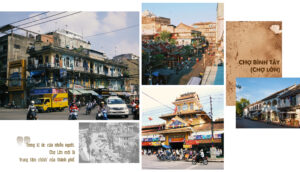– Vietnam is a country known for its diverse and rich cuisine, with many delicious and vibrant dishes. Below are some popular dishes that you shouldn’t miss when visiting Vietnam:
1. ” Phở “: Pho is one of the most famous dishes in Vietnam. A bowl of pho consists of delicious brot
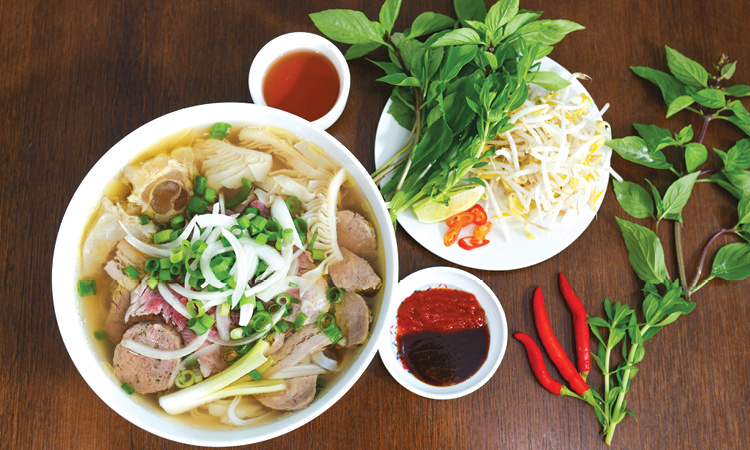
2. ” Bánh mì “: Vietnamese banh mi is famous for its sweet, soft bread, topped with ingredients such as grilled meat, meatballs, pate, and fresh vegetables
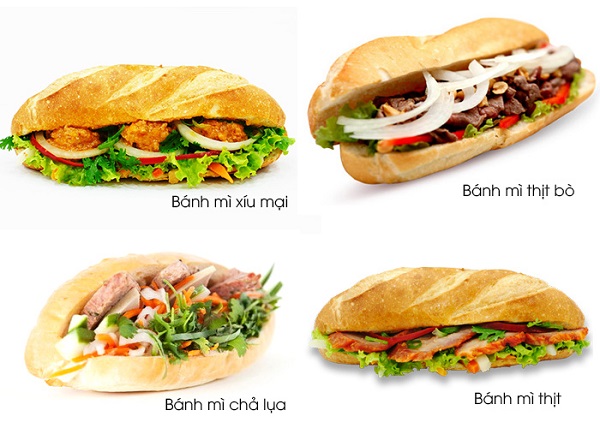
3. ” Bún chả ” : A popular traditional dish in Hanoi, Bun cha consists of delicious grilled pork and patties, served with soft vermicelli noodles and fresh herbs

4. ” Cơm tấm ” : A popular street food dish in Vietnam, com tam consists of broken rice, along with grilled pork chop, fried egg or sunny-side-up egg, steamed pork cake, and topped with green onions in oil, served with a side of pickled vegetables such as cucumber, tomato, or pickled radish
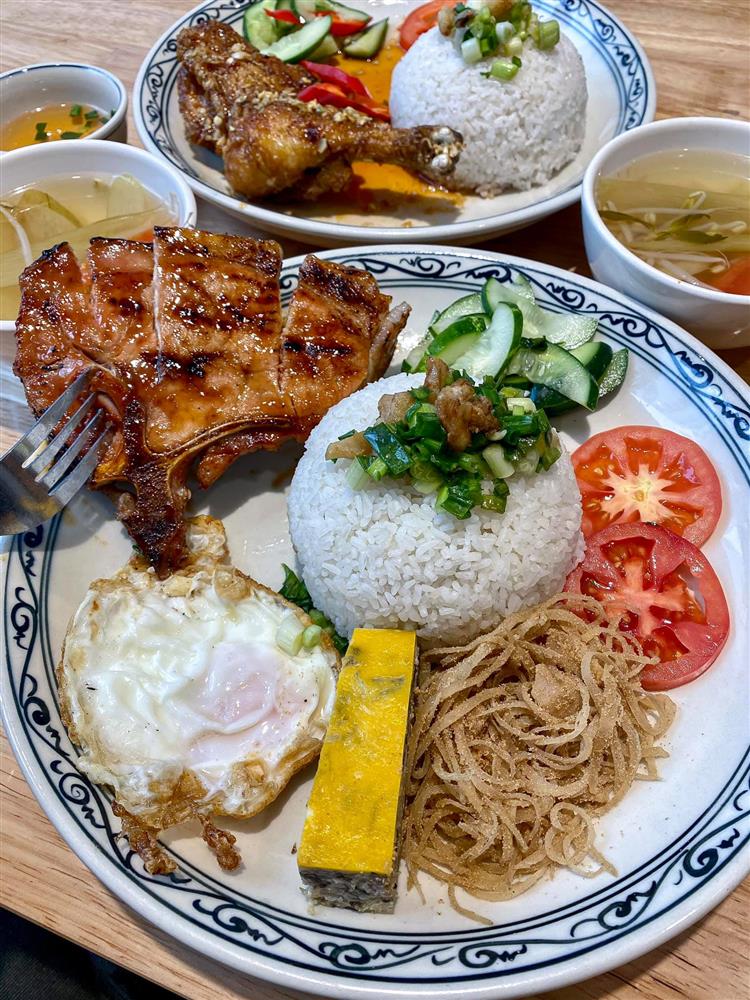
5. ” Bánh cuốn ” : also known as ” bánh mướt” or ” bánh ướt ”, is a Vietnamese dish made from a thin steamed rice batter roll, which can be filled with minced pork, wood ear mushrooms, or left unfilled.
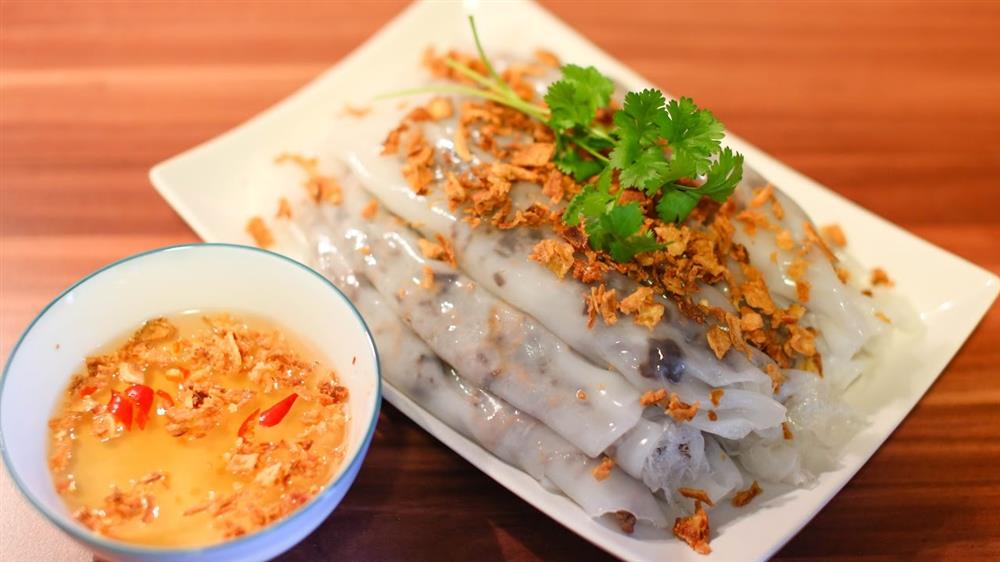
6. ” Gỏi cuốn ” : also known as nem cuon, is a popular Vietnamese dish. ” Gỏi cuốn ” originated from Southern Vietnam, with ingredients including lettuce, mint, perilla, dried shrimp, fresh herbs, boiled meat, and fresh shrimp, all wrapped in a rice paper wrapper

7. ” Bún bò’ ” : is one of the specialties of Thua Thien Hue province, although this noodle dish is popular across all three regions of Vietnam and even among Vietnamese people abroad. In Thua Thien Hue, this dish is simply called “bun bo” or more specifically “bun bo thit bo” (beef noodle soup).

8. ” Hủ tiếu ” : also written as ” hủ tíu” , is a noodle dish that uses rice-based noodles as the main ingredient. The key ingredients of hu tieu are hu tieu noodles, broth (made from pork bones and vegetables), minced meat or pork offal or seafood, and is often served with a small amount of bean sprouts or salad.
– Hu tieu is popular in Southern Vietnam and there are many varieties:
+ Hu tieu Nam Vang: There are two main types – dry hu tieu and wet hu tieu.
+ Sa te hu tieu: Originated from the Teochew people.
+ Hu tieu My Tho: Contains shrimp, squid, seafood, and snails, a specialty of My Tho.
+ Hu tieu Trung Hoa: Has a soy sauce aroma.
+ Hu tieu Sa Dec: Made from fresh Sa Dec rice noodles, with a distinctive aroma from the unique water source in the Sa Dec rice noodle village, which has a neutral pH of 7, making the noodles chewy and flavorful. Famous producers include Hu tieu Lanh Nam Sa Dec, Ba Nam Sa Dec, Hoa Hung, Bich Chi, etc.
+ Hu tieu go: A street-vended version with meatballs, lean pork, and sausage. The name comes from the two wooden or metal sticks that vendors use to create a distinctive sound to call out their presence.
+ Hu tieu muc: Featuring squid.
– All these varieties of hu tieu can be found in Ho Chi Minh City and other provinces in Vietnam.”
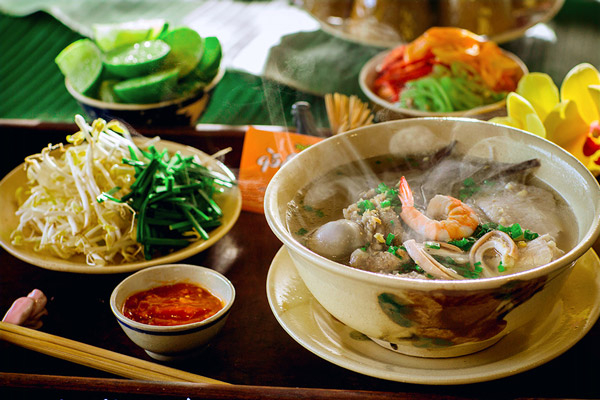
9. ” Bánh xèo ”: is a popular type of pancake in Asia, with a batter exterior and a filling of shrimp, meat, and bean sprouts that is fried until golden and shaped into a circle or folded into a half-moon shape. It is typically served with fresh vegetables and a dipping sauce made from fish sauce, garlic, and chili
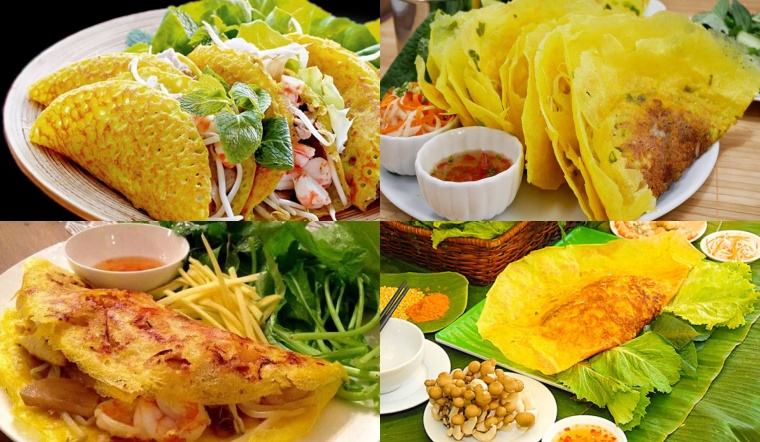
10. ” Bánh khọt ” of the Mekong Delta region : It is a typical cake of southern Vietnam, made from rice flour or tapioca flour, with a shrimp filling, fried and eaten with raw vegetables and a sweet fish sauce dip.
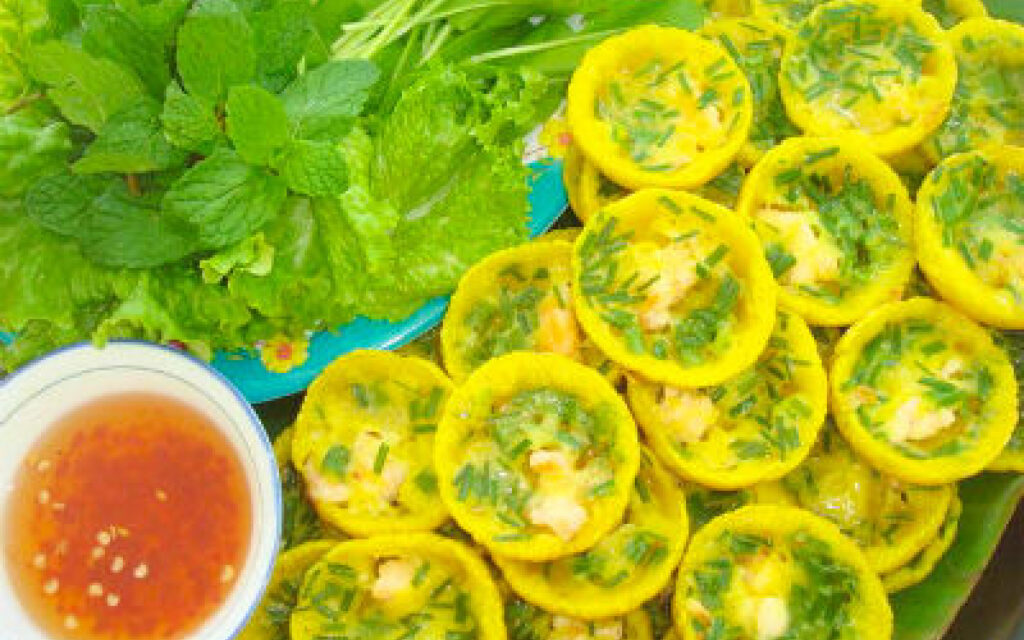
11. ” Bánh khọt “ of Vung Tau:
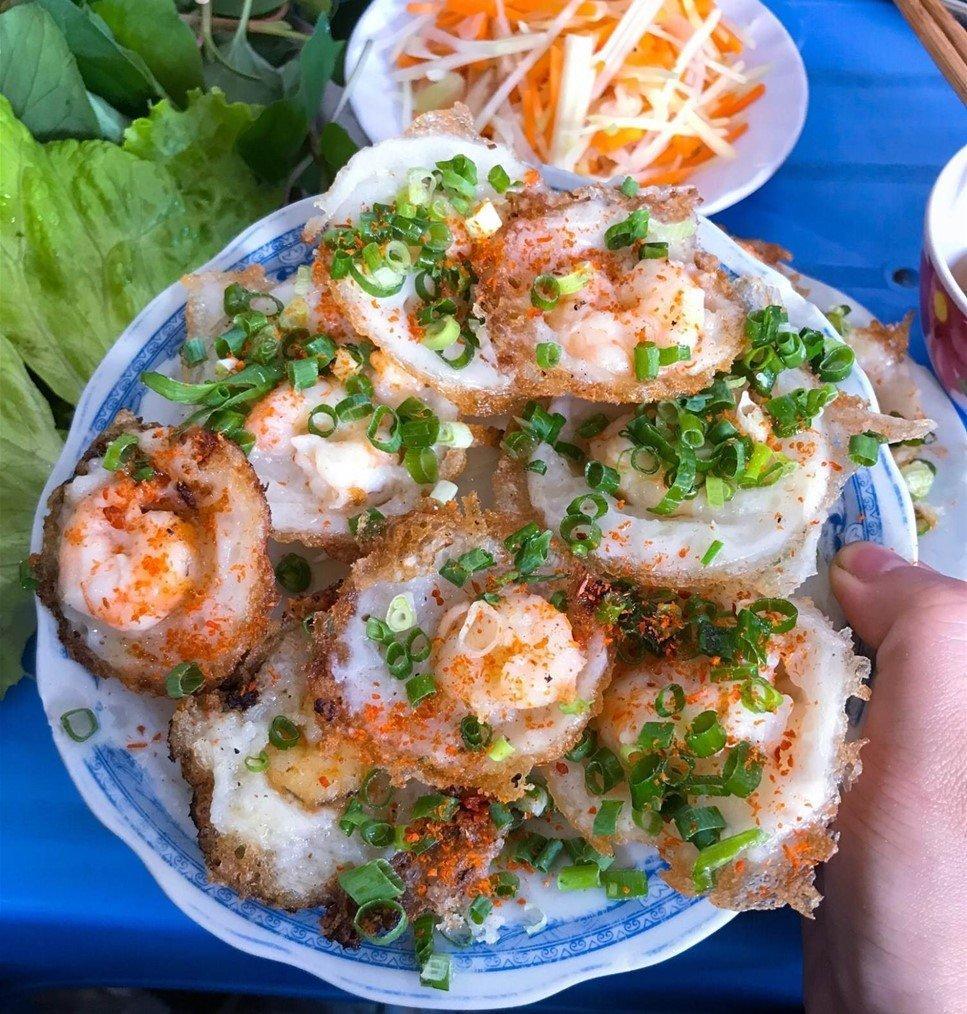
12. ” Mì quảng ” : is a dish with origins and is also a specialty of Quảng Nam province. Mì Quảng is a type of noodle, often made from finely ground rice flour with water from canarium seeds and eggs to give it a yellow color and thin, layered texture. It is then cut across the width to create thin noodle strands around 5-10mm wide. When preparing the dish, under the layer of noodles are various fresh vegetables – Mì Quảng must be eaten with a combination of 9 different fresh herbs and greens to create its robust flavor: basil, fresh lettuce, young mustard greens, white bean sprouts (which can be blanched or left raw), cilantro, Vietnamese coriander with finely sliced spring onions and thin slices of banana flower. On top of the noodles are pork, shrimp, chicken, snakehead fish (sometimes with boiled eggs) along with a broth simmered from pork bones. They also add finely chopped green onions, fresh herbs, and red chilies. The broth is typically called “nước nhân” and is a very concentrated, lightly flavored stock. In addition, the noodles are often served with crispy sesame crackers and crunchy peanuts, all contributing to the signature flavors of Mì Quảng
13. ” Cao lầu ”: is a noodle dish from Quang Nam, Vietnam. It is considered a specialty dish of the city of Hoi An. This noodle dish has yellow noodles, which are served with shrimp, pork, various raw vegetables, and very little broth. The yellow color of the noodles comes from the flour being mixed with ash from a local plant
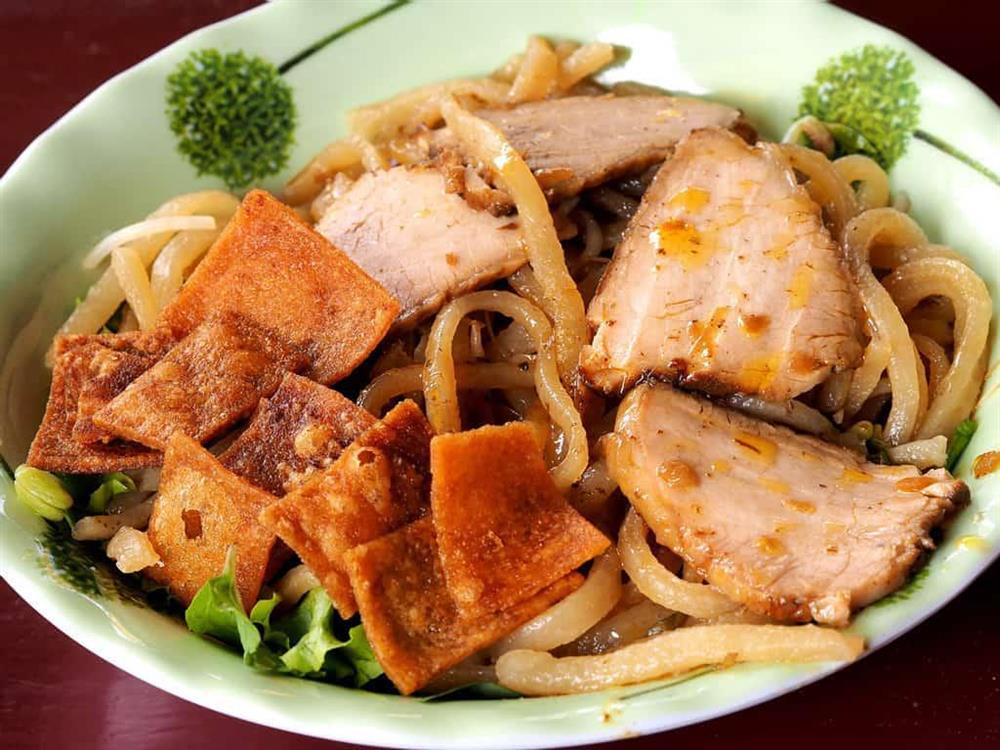
Source : Internet.

